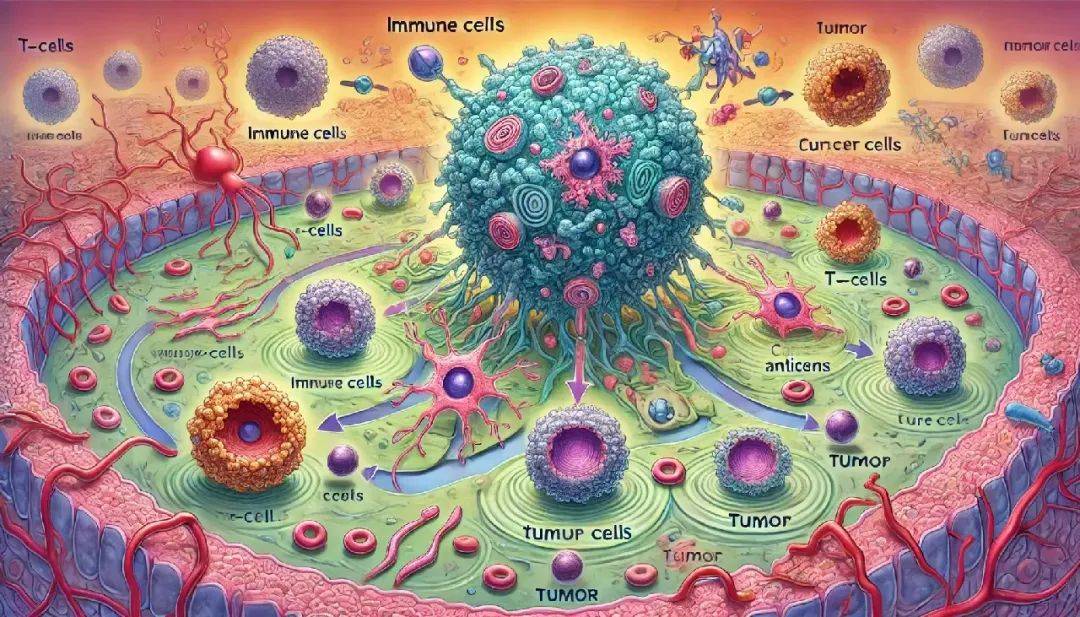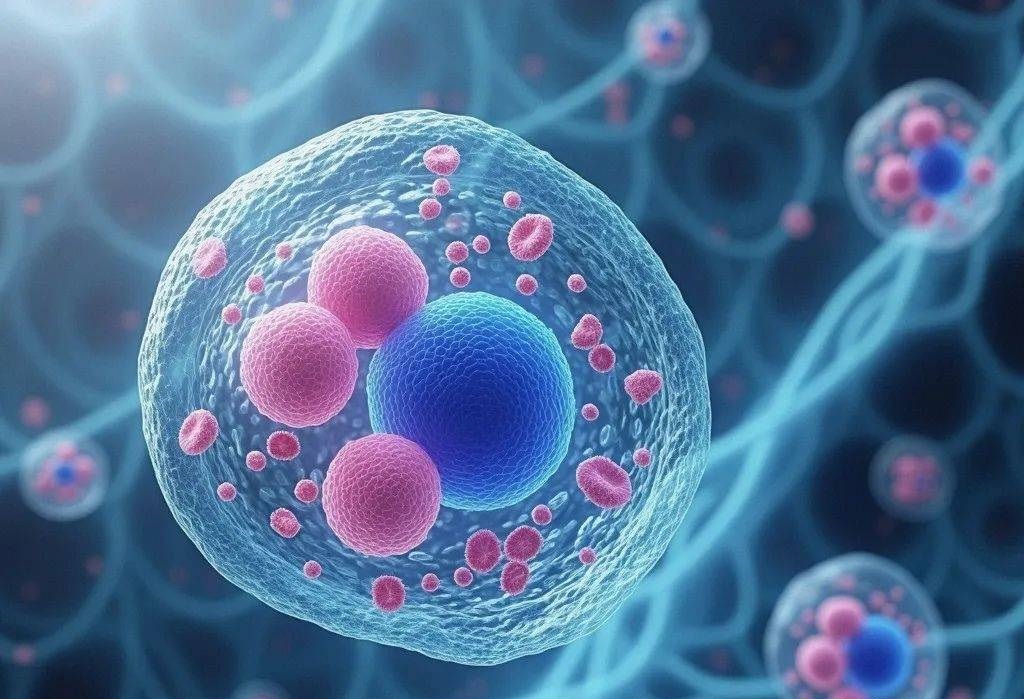Immune cells, commonly known as white blood cells, include lymphocytes and various phagocytic cells, and specifically refer to lymphocytes that can recognize antigens and produce specific immune responses. Lymphocytes are the basic components of the immune system and are widely distributed in the body. They are mainly activated by antigen stimulation, such as T lymphocytes and B lymphocytes, which undergo division, proliferation, and specific immune responses. In addition to T lymphocytes and B lymphocytes, there are also K lymphocytes and NK lymphocytes, totaling four types. T lymphocytes are a multifunctional group of cells. In addition to lymphocytes, cells involved in immune response include plasma cells, granulocytes, mast cells, antigen-presenting cells, and cells of the mononuclear phagocytic system.

Types of immune cells
T lymphocytes
That is, thymus dependent lymphocytes. Also known as T cells. Pluripotent stem cells derived from bone marrow (embryonic derived from yolk sac and liver). At present, it is believed that during the embryonic and neonatal stages of the human body, a portion of pluripotent stem cells or pre-T cells in the bone marrow migrate to the thymus and differentiate and mature under the induction of thymic hormones, becoming immune active T cells. Mature T cells are distributed through the bloodstream to settle in the thymus dependent area of peripheral immune organs, and can be recycled through lymphatic vessels, peripheral blood, and tissue fluid to exert cellular immunity and immune regulation functions. The recycling of T cells facilitates extensive exposure to antigenic substances entering the body, enhances immune response, and maintains immune memory for a longer period of time. There are many different markers on the cell membrane of T cells, mainly surface antigens and surface receptors. These surface markers are giant protein molecules bound to the cell membrane.
B lymphocytes
It can also be referred to as B cells. Pluripotent stem cells derived from bone marrow. In poultry, B cells are developed and generated within the bursa of Fabricius, also known as bursa dependent lymphocytes or bone marrow dependent lymphocytes. They are derived from the differentiation of lymphoid stem cells in the bone marrow. Compared to T lymphocytes, its volume is slightly larger. After being stimulated by antigens, these lymphocytes will proliferate and differentiate into a large number of plasma cells. Plasma cells can synthesize and secrete antibodies and circulate them in the blood. B-cell lymphoma is the most common lymphocytic leukemia, and research on this disease continues to emerge. In mammals, it develops in tissues such as bone marrow with a cystic structure. Also known as bone marrow dependent lymphocytes. Stem cells or pre-B cells derived from bone marrow gradually differentiate into B cells with immune potential after migrating into the bursa of Fabricius or cystic organs. Mature B cells migrate out of peripheral blood and enter the spleen and lymph nodes, mainly distributed in splenic nodules, splenic cords and lymph nodes, lymphatic cords and submucosal lymph nodes of the digestive tract. After being stimulated by antigens, they differentiate and proliferate into plasma cells, synthesize antibodies, and exert humoral immune functions. B cells are more abundant in the bone marrow and lymph nodes than T cells, less abundant in the blood and lymph nodes, and even less abundant in the thoracic duct, with only a few participating in recycling. There are many different markers on the cell membrane of B cells, mainly surface antigens and surface receptors. These surface markers are giant protein molecules bound to the cell membrane
K lymphocytes
Also known as antibody dependent lymphocytes, derived directly from multipotent stem cells in bone marrow, with no antigen markers on the surface but with receptors for IgG antibodies. When exerting the function of killing target cells, the corresponding antibodies of the target cells must be present. After the target cell surface antigen binds to the corresponding antibody, it then binds to the corresponding receptor of K cells, triggering the killing effect of K cells. All target cells bound with IgG antibodies have the possibility of being killed by K cells. Therefore, it can also be said that the killing effect of K cells themselves is non-specific, and their recognition of target cells relies entirely on the recognition effect of specific antibodies. K cells account for about 5-10% of the total lymphocytes in human peripheral blood, but their killing effect is very high. When there are only trace amounts of specific antibodies in the body that can bind to antigens but are not sufficient to activate the complement system and destroy target cells, K cells can exert their killing effect. K cells are more abundant in peritoneal exudate and spleen, less in lymph nodes, and absent in thoracic duct lymph, indicating that K cells do not participate in lymphocyte recycling. However, the killing effect of K cells plays an important role in tumor immunity, antiviral immunity, antiparasitic immunity, transplant rejection reactions, and some autoimmune diseases. The immune responses produced include two types: immunoprotection and immunopathology. If the target cells are too large (parasites or solid tumors), phagocytic cells cannot function, or the surface of the target cells is covered by antibodies, T cells cannot approach, but K cells can still function. The rejection reaction in kidney transplantation and the destruction of affected organs or tissues in autoimmune diseases of the body may be related to K cells
NK lymphocytes
NK cells (natural killer cells) are the third group of lymphocytes, alongside T and B cells. The number of NK cells is relatively small, accounting for about 15% of the total lymphocytes in peripheral blood and about 3% to 4% in the spleen. They can also appear in the lungs, liver, and intestinal mucosa, but are rare in the thymus, lymph nodes, and thoracic ducts.
NK cells are larger and contain cytoplasmic granules, hence they are called large granular lymphocytes. NK cells can directly kill target cells non-specific, and this natural killing activity does not require prior antigen sensitization, antibody involvement, or MHC restriction.
The target cells killed by NK cells are mainly tumor cells, virus-infected cells, larger pathogens (such as fungi and parasites), organs and tissues transplanted from allogeneic sources.
Mast cell
When alkaline cells are present in connective tissue and mucosal epithelium, they are called mast cells, and their structure and function are similar to those of eosinophils.
Mast cells, like blood basophils, are tissue cells with strong basophilic granules. The particles present in the blood contain heparin, histamine, and 5-hydroxytryptamine, which are released by cell disintegration and can cause immediate allergic reactions (inflammation) in tissues. Due to the contact between IgE antibodies bound to mast cells and antigens, the cells often collapse.
Mast cells: Cells are round or oval in shape, with small nuclei that are round or oval in shape, lightly stained, and located in the center of the cell. Cells are often clustered or individually distributed near blood vessels. The cells are round or oval in shape, and the cytoplasm is filled with uniformly sized particles stained blue purple, evenly distributed around the nucleus.

Boosting immune cells
By utilizing sleep
Sleep is closely related to the human immune system. Famous immunologists have found through the "self sleep" test that good sleep can significantly increase the number of two types of lymphocytes in the body. Medical experts' research has shown that during sleep, the human body produces a sleep factor called cell wall acid, which promotes an increase in white blood cells, activity of macrophages, and enhanced detoxification function of the liver, thereby eliminating invading bacteria and viruses.
Maintain a positive attitude
It can maintain the human body in an optimal state, especially in today's society where people face great pressure. The enormous psychological pressure can lead to an increase in hormone components that inhibit the human immune system, making them susceptible to colds or other diseases.
Limit alcohol consumption
Do not drink more than 100 ml of low alcohol Baijiu, 250 ml of yellow rice wine and 1 bottle of beer every day, because alcohol will have a negative impact on every part of the human body. Even though drinking wine can lower cholesterol, it should be limited to one glass per day as excessive consumption can cause significant damage to organs such as the blood and heart.
Participate in sports
Three studies conducted by experts indicate that after exercising for 30 to 45 minutes a day, 5 days a week, for 12 weeks, the number of immune cells will increase and resistance will also increase relatively. As long as the heart rate accelerates during exercise, taking a walk after dinner is very suitable.
vitamin supplementation
Supplement vitamins and minerals appropriately every day. Experts point out that the weapons used by the body to resist foreign invasion, including interferon and the quantity and vitality of various immune cells, are related to vitamins and minerals.
Improving the internal ecological environment
The research and use of probiotics to enhance immunity has a long history. Research has shown that beneficial bacterial populations, represented by gut bifidobacteria and lactobacilli, have broad-spectrum immunogenicity and can stimulate the division and reproduction of lymphocytes responsible for human immunity. At the same time, they can also activate non-specific immune systems to "eat" various pathogenic foreign microorganisms, including viruses, bacteria, chlamydia, etc., producing multiple antibodies and improving human immune function. For healthy people, it may be helpful to "diet therapy" by eating more lactobacillus drinks; And for those on the edge of health, probiotics can be used to regulate the balance of microbiota in the body.
